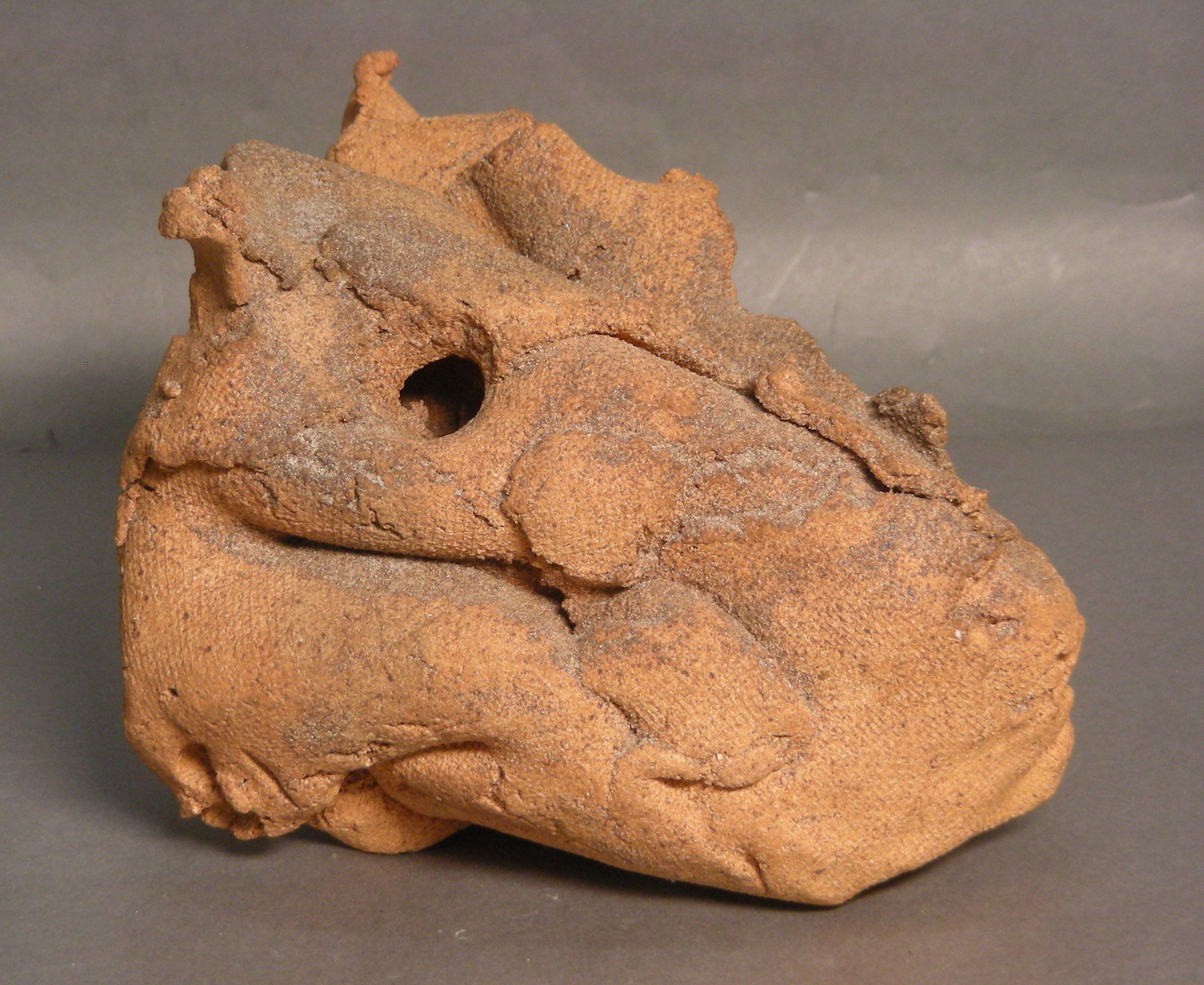Imre Schrammel

(b. 1933) born in Szombathely, Hungary, lives in Budapest, Hungary
Animal Head, 1973
stoneware, wood, 7 x 3 x 3.25 inches, 93.39.84
Additional images below
Imre Schrammel studied ceramics at the Hungarian Academy of Applied Arts in Budapest, Hungary, from 1952-1957, after which he immediately started working as a professor there. He became interested in industrial ceramic production, and from 1959 to 1962 he worked as an artistic consultant at the well-known Hollóháza Porcelain Factory in Hollóháza, Hungary. In 1969 he organized the first Siklós Ceramic Symposium, which brought European ceramicists to the city of Siklós for an exchange of ideas and initiated the Symposium movement in Hungary.
In the spring of 1971, under the auspices of the International Academy of Ceramics, the Tennessee Arts Commission pledged its support for the promotion and establishment of the U.S. International Ceramic Symposiums. The Symposium’s mission to help develop a worldwide network of support for ceramic art was achieved by bringing together top ceramic artists from around the world for a month-long sharing of ideas and creation of innovative ceramics.
Schrammel represented Hungary at the First U.S. International Ceramic Symposium, which consisted of twenty-five artists from thirteen different countries, and was hosted in the summer of 1973 at the Memphis Academy of Art. At the Symposium, Schrammel wire cut large interlocking forms out of large clay slabs, created mounted wall reliefs that use a variety of materials and techniques, and hand-built organic abstract representations of animal heads.



Left: Schrammel uses wire to cut a solid block of clay into interlocking sections of sculpture. – Ceramics Monthly Center: Schrammel with work to be fired Right: Animal Head II, 1973, stoneware, 4.75 x 5.25 x 6.75 inches, 93.39.97
Although the work created during the Symposium may seem a little roughly constructed, Schrammel is known for working in a variety of different ways. In the years following the Symposium, he has become well recognized for his work creating a series of incredibly intricate and finely detailed porcelain figurines which were manufactured starting in 1997 at the Herend Porcelain Factory in Budapest, Hungary. He is also known for large scale reliefs and ceramic wall murals, over twenty of which are installed in Hungarian businesses, schools, theaters, and public spaces. In recent years his work has decreased in size due to his age, but even with this shift in scale Schrammel maintains his curiosity and intense passion for experimentation.
Schrammel continued working at the Hungarian Academy of Applied Arts as a ceramics professor until 1990, and as its rector from 1993-1999. In 1992 he was a founding member of the Hungarian Academy of Arts, an artist collective decidicated to helping to connect artists and provide opportunities to its members. From 1996 to 2006 he worked at the Herendi Porcelain Manufactory as an artistic consultant.
Schrammel has exhibited his ceramic work prolifically across many countries in Europe, taking part in over 60 solo exhibitions over the course of his career. In addition to taking part in the 1973 Symposium in Memphis, he has also participated in over 15 other International Ceramic Symposiums throughout Europe. Schrammel’s work is held in many public collections, including at the Museum of Applied Arts in Budapest, Hungary; the International Ceramics Museum in Bechyne, Czech Republic; the Museum of Taipei, Taiwan; the Museum of Ceramics, Seoul, South Korea; the Ariane Museum in Geneva, Switzerland; the International Ceramics Museum in Faenza, Italy; the Suntory Museum in Tokyo, Japan; and the Victoria and Albert Museum in London, England. In 1971 and 1984 he won the Grand Prize in the Faenza International Ceramic Competition, which is considered to be one of the highest honors one can achieve in the field of ceramics. He is a member of the International Academy of Ceramics and served as its vice president in 1986. For his contributions to the arts, he is the recipient of the Hungarian state-sponsored Kossuth Prize, the Hungarian Order of Merit (2012), and was named a Hungarian Artist of the Nation (2014).
Imre’s direction in clay is texture and abstraction. He wants to express the “balance in biological state, without which there is no real life.” He considers himself a craftsman rather than an artist. – 1973 International Ceramic Symposium catalogue
Written by Aiden Layer, TN Arts Intern

